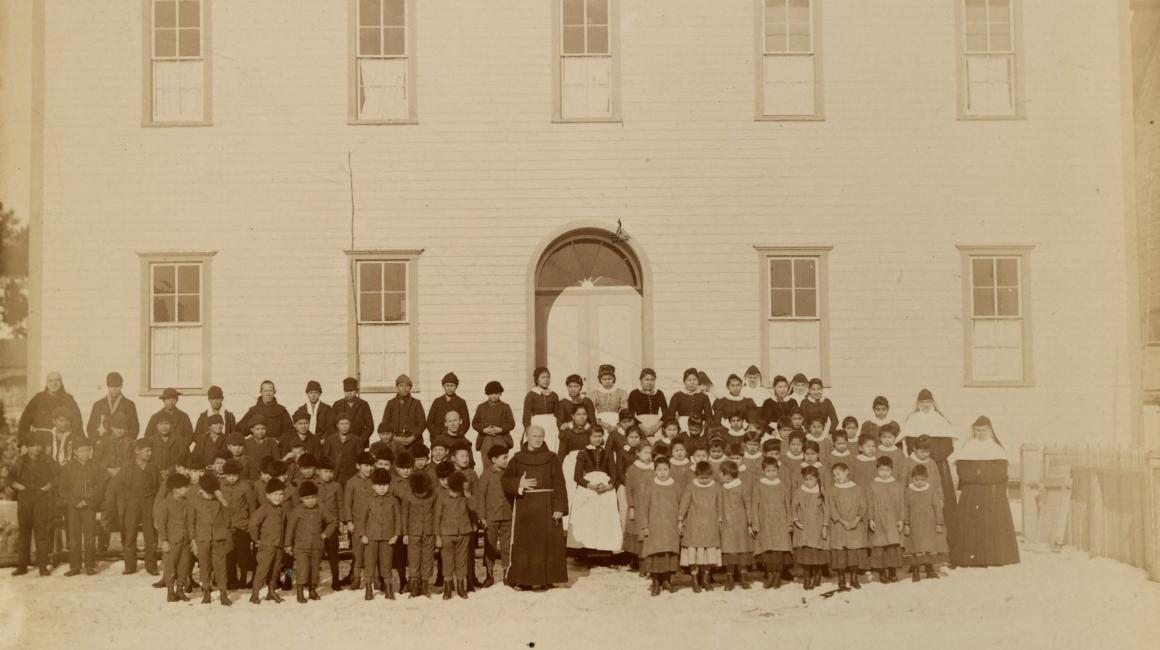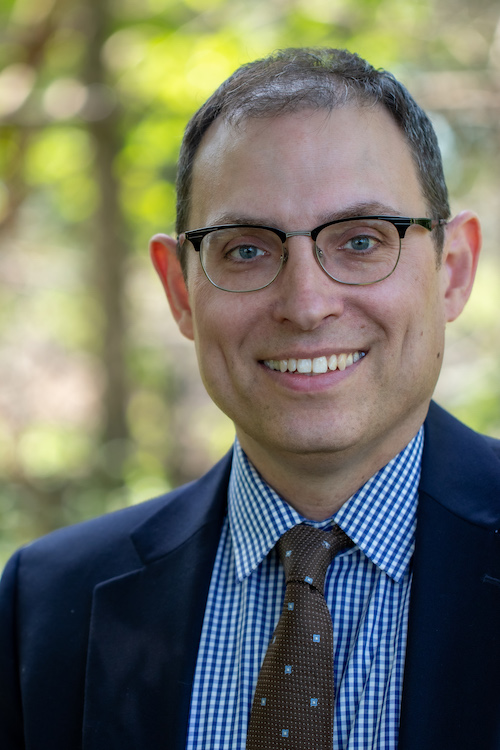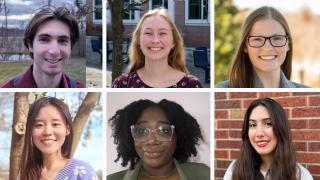The history of Indian Boarding Schools is more recent than many realize. The U.S. government’s funding of what ultimately grew into a system of hundreds of schools, often run by religious orders, began in the 1860s. But many boarding schools continued to operate well into the late 20th century. In fact, Holy Childhood in Harbor Springs, Michigan remained open until 1983, making it one of the last Indian Boarding Schools to close in the U.S. The tactics of assimilation were coarse, involving removal of children from their families, an indoctrination into white American history, economics, social norms, and Christianity, and the forced abandonment of indigenous languages and cultural practices. “Kill the Indian, and Save the Man” was the crude motto of one of the boarding school movement’s most famous advocates. Needless to say, the impact on Native American communities has been widespread and profound. By the 1920s, it’s estimated more than 80 percent of Native American children attended boarding schools. And researchers and indigenous communities have documented impacts ranging from mental health and social issues to a nearly unrecoverable loss of language and cultural practices. Moreover, even though Indian Boarding Schools have been closed for many decades, the impacts are thought to stretch beyond those who experienced boarding schools directly. “Intergenerational trauma is fundamentally an unresolved trauma, and it has the capacity to ripple through the generations,” Constant says. “The harsh reality is many generations of indigenous families and communities were torn apart, so it should come as no surprise that this has had a deep impact even on those who never went to a boarding school.”
Recognizing the impacts of this trauma on subsequent generations can be challenging, and as an educator, Constant became very interested in the role teachers might play in advocating for impacted students. For his dissertation research, he began working with two public schools with some of the highest Native American student populations in Michigan. (In both schools, more than half of students are Native American.) His primary objective was to better understand staff’s levels of confidence and competence in dealing with intergenerational trauma, and in doing so, help them identify factors that decrease and increase that capacity. Through a review of school practices, surveys, focus groups and intimate interviews with teachers, staff and administration, his work is revealing how and why teachers often feel ill-equipped to help students. “I think we’re learning that there are a lot of contributing factors,” Constant says. “Because this is a very sensitive topic, some teachers, particularly, white teachers, express a fear of ‘saying the wrong thing,’ possibly offending a student or a family member, or retriggering a trauma. Others are revealing how past professional development trainings on trauma have failed to address this specific subject of boarding schools, or have simply left them feeling ‘informed’ but without actionable classroom strategies. Others remarked they feel this needs to be a continuously supported conversation at their school, not just a ‘one-and-done’ training every few years.”
Because understanding the history of Indian Boarding Schools is also key to understanding the trauma, some educators also noted the specific challenge of finding the “right person” to lead that part of a training. Constant says simply asking someone from the local tribal community to present that history can sometimes be problematic — both because it places the burden of labor for ‘fixing racism’ on a member of a marginalized group, and because people personally impacted by a topic sometimes face unique challenges in communicating with audiences. “During the research, we learned that one of the schools tried something like this in the past, and it wasn’t well received,” says Constant, noting the reasons for that are complex, and may be as much a reflection on the audience as the presenter. “But I know, for example, from my past work in Holocaust education, that folks who are personally connected to survivors often aren’t ideal presenters. Because of their closeness to the topic, a talk can feel more like a ‘sermon’ than part of a structured professional development training, especially when the specific goal is empowering teachers to advocate for their students.”
Having helped the schools uncover these key challenges, Constant hopes a next stage of his research can assist them in designing and implementing an all new training strategy for dealing with intergenerational trauma of Native American students. The work has left him feeling empowered too. “During one of our focus groups, I had a teacher say, ‘You know, Tim, just you being here gave us an occasion to have the conversation we needed to have,” Constant says. “And I think that says a lot about research. We often think of it as the production of knowledge, but research can be an action that actually helps people in a community in a concrete way.”
Constant plans for that action to be ongoing too. Even once he finishes his formal dissertation, he says he’ll “without a doubt” continue working with his partner schools to make sure “the work really does make a difference.”
###
Story by Lou Blouin








